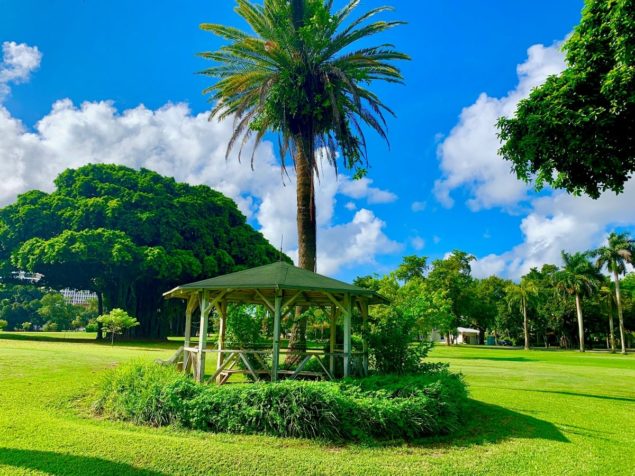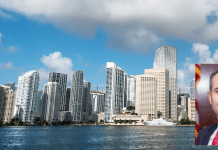|
Getting your Trinity Audio player ready...
|

(Photo credit: V. Cerda)
According to a study commissioned by the U.S. Chamber of Commerce, American towns that make historic preservation a priority enjoy an economic dividend to the local economy. Additionally, heritage tourism has a greater impact on a local economy with heritage tourists spending 15 percent more than non-heritage tourists.
Small and local businesses often show a preference for locating in historic commercial areas. In study after study the rate of value increase in historic districts outperforms the market as a whole. The U.S. Chamber study adds, “In cities large and small, consumers prefer living, shopping, visiting, and locating their businesses in historic neighborhoods.
That built history in your community is not nostalgia — it is an economic asset.”
Hanging on to the nostalgia on the Coral Gables greenways not only has emotional value but economic value to boot.
The Club
It all started with the Coral Gables Golf and Country Club and the Granada Golf Course. The land once was the Merrick family’s vegetable field and part of the original 1921 city plan by George Merrick and landscape architect Frank Button. The golf course, designed by the nationally known team of Langford and Moreau, opened in January 1923.
Three months later, the clubhouse, designed by Hampton and Reimert, became Coral Gables’ first public building. The six original coral rock arches still stand today and reflect the Coral Gables Mediterranean style that helped set the tone for the city’s architecture.
The Coral Gables Golf and Country Club quickly became the epicenter of the new community and played an important role in its development. Salesmen, including Merrick himself, entertained prospective buyers there and showed them home sites from its distinctive tower. The Country Club of Coral Gables, as it is known today, received its charter on Oct. 9, 1935. A historical marker was erected in 2005 by the Florida Department of State.
The Course
The Granada Golf Course is located across from the Country Club. George Merrick’s vision was to create a planned community he called “The City Beautiful” — and golf was part of the plan. Coral Gables began construction of its nine-hole golf course in 1922. The course was initially built for the residents of Coral Gables and designed under the personal supervision of William Langford of the golf architectural firm of Langford and Moreau.
Golf was so popular in Coral Gables that the golf professional at Granada, Charlie Thum, was giving lessons on part of the course before it was finished. It opened in 1923 with great fanfare and media attention. Granada is the oldest operating nine-hole course in Florida.
The Shelter
For 80 years, golfers on the Granada Golf Course have taken refuge in the several 1940s wooden rain shelters scattered along the historic greens. Today, these rain shelters are being replaced and will be lost to history. However, in August 2020, the Historic Preservation Board unanimously passed a motion “to recommend that the City of Coral Gables consider preserving one of the existing c.1940 wooden rain shelters and to renovate, rehabilitate, or reconstruct as necessary in order to move it to an appropriate location on the Granada Golf Course.”
Although a good gesture, the city should consider restoring and repurposing all the shelters, not just “one of the existing” rain shelters. Instead plans suggest replacement of the historic shelters with modern ones. Neighbors oppose the change and cling to the nostalgia. As the chamber study supports, not only do places matter emotionally but economically as well through that “nostalgia” effect. Brooklyn’s Prospect Park understood this economic value and recently restored its similar historic shelters. Why not Coral Gables?
The Place
More than a burger place, Burger Bob’s is an institution. An institution embedded on the Granada Golf Course. Part of the neighborhood fabric for close to 30 years. And just like the rain shelters, this place’s nostalgia is an “economic asset.”
Keeping the “Burger Bob” concept is more about the familiar than about the food. The simple dining concept with its comfort food complements its surroundings and blends in with the greens. It does not encroach on the historic golf course — it enhances it. Sadly, an unsolicited bid to take over Burger Bob’s lease will forever change the original diner’s concept and its architectural footprint. The new dining will not only double the density, it will adversely affect the historical integrity of the golf course and erase the home-style experience neighbors and residents have come to value and love. Burger Bob’s is more than the burger. It is about a place that matters.
A former city mayor observed, “The neighborhood loves Bob’s…it reminds us of the old days.”
A 73-year resident has been going to Bob’s on a regular basis for over 20 years. She describes Burger Bob’s as “…an iconic place that there are not enough of.”
(Historical information cited in this article was courtesy of the Coral Gables Historic Preservation Office.)
Dr. Karelia Martinez Carbonell is president of the Historic Preservation Association of Coral Gables, a 501(c)3 non-profit founded in 1991. The association promotes the understanding of the importance of historic resources and their preservation. For more information and/or to support the mission of HPACG, visit www.historiccoralgables.org.





